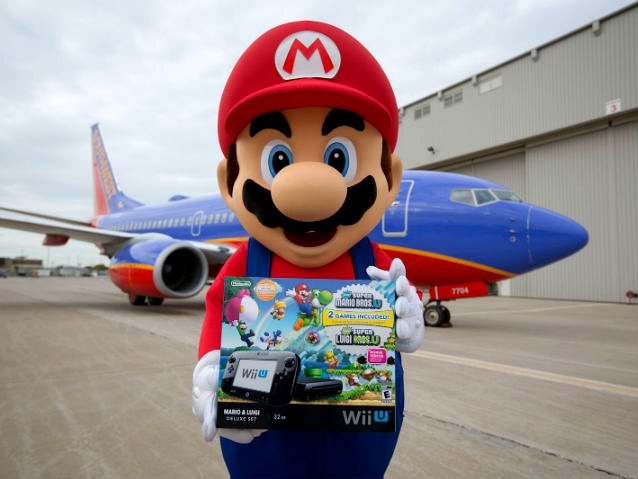
Happy birthday to Nintendo, a company that has touched the childhoods (and adulthoods) of so many gamers with its imaginative games and zany consoles. On this special occasion, we thought we'd explore the company's long and varied journey and ask how can the company ensure that Mario is still collecting coins in 2050?
The birth of Nintendo for the bulk of today's gamers may be marked by the creation of its trademark Donkey Kong and Mario characters in 1981. In actuality though, the history of the company goes back to 1889, when it was founded by Fusajiro Yamauchi to manufacture playing cards (hanafuda) in Kyoto (also the year the capital moved from Kyoto to Tokyo).
Nintendo was the first Japanese company to utilize plastic materials for production, enabling it to gain prominence. It was not until 1959, however, that Nintendo began to change course, reorientating itself towards a segment of the market that playing cards were originally unfit for -- households -- and, by extension, families and children. Via a collaboration with Disney, Nintendo playing cards were stamped with Disney characters and sold to families -- not just gamblers and risk-takers. The successful collaboration led to the company going public and its being listed on the Osaka stock exchange in 1962.
Going electronic
Saturation of the card market led the company to try out various other directions, finally entering the electronic games segment in the mid-1970s; its first success was Game & Watch, a line of handheld electronic games sold between 1980 and 1991 and imagined by Gunpei Yokoi. The series sold 43.4 million units worldwide, featuring the now-famous Mario and Donkey Kong.
1983 saw the release of the NES (originally titled the Famicon in Japan), a cartridge-based video game console which took advantage of its lack of competitors in the video game crash environment of 1983. It triggered a policy Nintendo has since stuck with: that of avoiding third-party company game development, limiting them to only five a year, and aiming to keep good quality amidst the poorer quality games coming out in those crash years. The console gained success with Metroid, Super Mario Bros and Zelda, from 1985 to 1987.
Going handheld
Now-household name Tetris came out in 1989 on the even more iconic Game Boy, soon becoming the bestselling portable game system in history. Super Nintendo followed hot on its heels in 1990, using Mode 7 rotation technology and beating out all of its competitors. In 1996, the launch of Nintendo 64 skipped over the 32-bit generation of consoles (opting for cartridges over the CDs chosen by competitors). The Pokemon franchise allowed Nintendo to retain its advantage in 1996, particularly with the launch of the Game Boy Color at the end of 1998.
The era of Yamauchi family leadership ended with the coming of the new millennium, when Satoru Iwata took the reigns as CEO. The GameCube was launched, followed by the GameBoy Advance, followed by 2004's Nintendo DS, Nintendo DSi and DS Lite.
Going through the motions
In 2006 came the seventh generation console, the Wii -- lauded as a nifty, innovative way to garner casual gamer fanship. With the Wii, Nintendo took gaming to the whole family with its motion-sensitive controllers called 'Wiimotes', opening up a massive new market segment. Sales reflected this, with the Wii selling more units in the United States than the Xbox 360 and PlayStation 3 combined in the first half of 2007.
The portable Nintendo 3DS and 3DS XL were released in 2011-12. In 2012, however, the subsequent release of the Wii U was widely panned as a failure: it did not drive 2013 sales and fell sharply short of its targets.
Going forwards
And this is where we are today, with Nintendo still iconic, still respected as a games maker and a power to be reckoned with, but, of late, falling backwards. Although let's be fair: sales of the Wii U were not overwhelming, and it is a failure indeed -- especially for Nintendo's reputation -- but emerging stats point out that the device is not actually doing that poorly. In fact, in Japan sales of the Wii U are not far behind those of the 3DS XL, which tops the charts. And as more Wii U games are launched, sales will surely only go up -- because the value of Nintendo has been in its franchises, not necessarily its technology. Think Pokemon, Zelda, Donkey Kong, Tetris and Mario. Hardcore gamers will buy Nintendo products out of nostalgia; casual gamers will buy them out of perceived ease of use and entertainment, as well as suitability for children, and, again, familiarity.
If Nintendo's not ruling the roost outside Japan, it is still more capable of weathering out the storm for much longer than many other companies. After all, it's well-known for having deep financial pockets.
So, 125 years after its birth, attempting to woo non-hardcore gamers -- just as Nintendo wooed household card players in the 1960s -- appears to be Nintendo's next move, and it makes sense, too. Head developer Shigeru Miyamoto recently pointed out that its core group will still be families, and Iwata in January said that Nintendo will be entering the market for the elderly.
There were also the interesting sales figures of Animal Crossing: New Leaf in March, predominantly made up of 19-24-year-old females, so more games focused on women may also be in the cards.
The truth is that, although the lackluster Wii U did target families, the necessary innovation was not there. The console was not new enough to convince casual gamers to buy in. So while Nintendo goes back to the trenches, the company can keep doing what it is known for since it made a headway into the hearts of consumers back in the 1960s -- attracting families and households with top quality games.
You can follow Natalie Meyer on Twitter @tokyoesque and @ioetglobal
Published under license from ITProPortal.com, a Net Communities Ltd Publication. All rights reserved.

